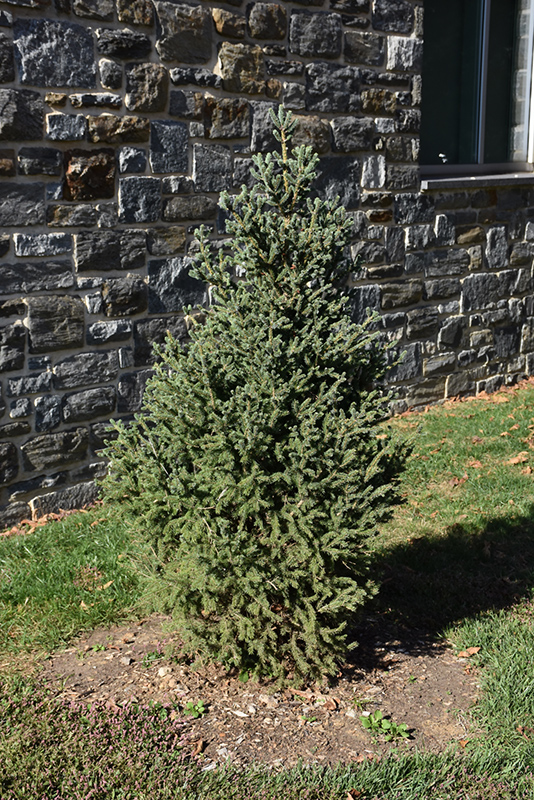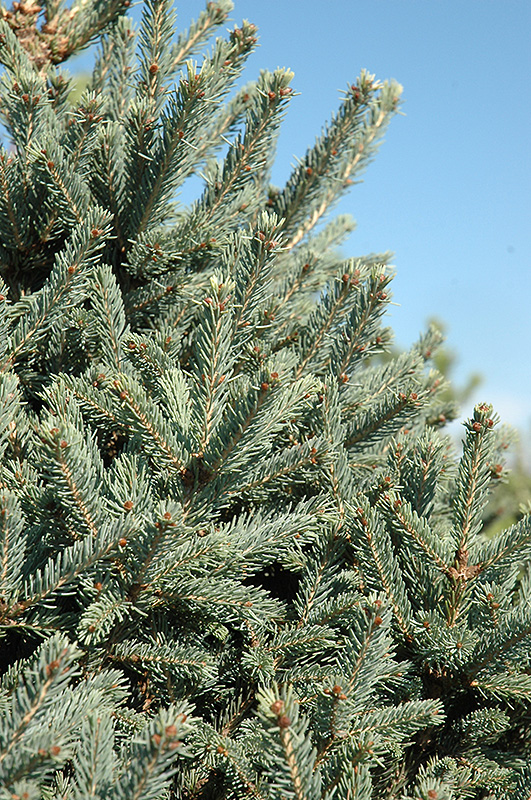Height: 12 feet
Spread: 5 feet
Sunlight:
![]()
![]()
Hardiness Zone: 3b
Description:
A distinctive cultivar featuring short, electric blue-gray needles and prominent brown buds at the tips of the branches, makes an exceptional focal point or grouping; surely one of the best dwarf spruces, very unique, hardy and tough
Ornamental Features
Yukon Blue Spruce is a dwarf conifer which is primarily valued in the landscape or garden for its distinctively pyramidal habit of growth. It has attractive steel blue evergreen foliage. The needles are highly ornamental and remain steel blue throughout the winter.
Landscape Attributes
Yukon Blue Spruce is a dense multi-stemmed evergreen shrub with a distinctive and refined pyramidal form. It lends an extremely fine and delicate texture to the landscape composition which can make it a great accent feature on this basis alone.
This is a relatively low maintenance shrub. When pruning is necessary, it is recommended to only trim back the new growth of the current season, other than to remove any dieback. It has no significant negative characteristics.
Yukon Blue Spruce is recommended for the following landscape applications;
- Accent
- Mass Planting
- General Garden Use
Planting & Growing
Yukon Blue Spruce will grow to be about 12 feet tall at maturity, with a spread of 5 feet. It tends to fill out right to the ground and therefore doesn't necessarily require facer plants in front, and is suitable for planting under power lines. It grows at a slow rate, and under ideal conditions can be expected to live for 50 years or more.
This shrub does best in full sun to partial shade. It prefers to grow in average to moist conditions, and shouldn't be allowed to dry out. It is not particular as to soil type or pH. It is somewhat tolerant of urban pollution, and will benefit from being planted in a relatively sheltered location. This is a selection of a native North American species.






